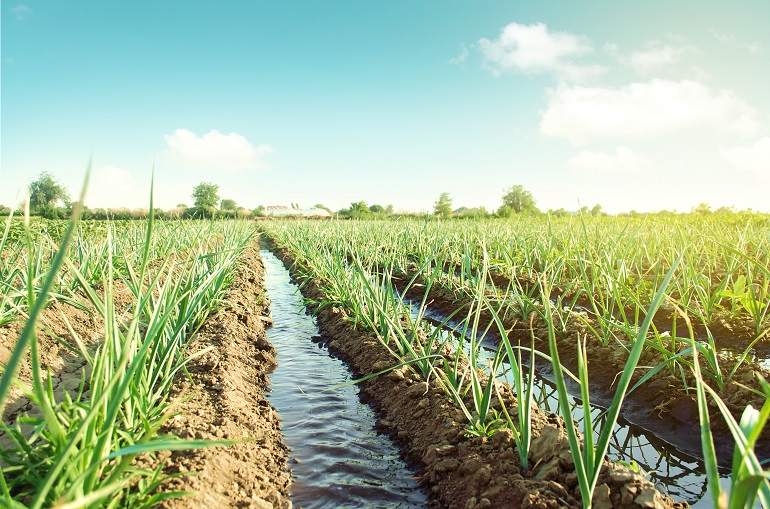Leek Water Requirements and Irrigation Systems

This post is also available in:
This post is also available in:
![]() Español (Spanish)
Español (Spanish) ![]() Français (French)
Français (French) ![]() Deutsch (German)
Deutsch (German) ![]() हिन्दी (Hindi)
हिन्दी (Hindi) ![]() Ελληνικά (Greek)
Ελληνικά (Greek) ![]() Português (Portuguese (Brazil))
Português (Portuguese (Brazil))
How much water do leeks need?
Leeks have a shallow rooting system (most at the upper 5-10 cm of soil) which grows from a flat ‘stem plate’ on the bottom of the swelled shank (like an underdeveloped bulb). To maximize the amount and quality of production, the top 3-4 inches of soil must be kept sufficiently moist at all times. Thus, in areas with few rainfalls during the spring and summer, leeks must be watered weekly (in sandy soils even more often) by soaking the soil’s upper 18 inches (46 cm). Of course, water requirements can be different under different weather and soil conditions and with plants of different leek varieties (different growing seasons). Keep in mind that leek generally has fewer water needs than onions.
In case of direct sowing to the field, the farmer needs to water daily and for at least 4 days after sowing. In case the leeks are transplanted, many commercial leek growers have reported that they apply 10 mm of water the day before planting and 10 mm right after planting the young seedlings to facilitate plant establishment. From that point on, they continue by irrigating with 20-30 mm (around 1 inch) of water every 7-10 days. During hot and dry summer days, they may need to irrigate up to 3 times a week. However, excess water can cause stems to rot. On the other hand, in the case of water-stressed conditions, leeks reduce rates of transpiration and photosynthesis, which leads to a reduction in the growth rate. Finally, no irrigation should be applied 3-4 weeks before and until harvest.
How to irrigate leeks
The optimum irrigation method depends mainly on the planting method. In many cases, producers prefer to irrigate their leeks by furrows they create next to the raised beds, by sprinklers, or by drip irrigation. Excess humidity, especially on foliage, may favor fungal disease outbreaks. To prevent such problems, producers irrigate their leeks early in the morning to manage to dry by the time the temperature rises at noon. This is especially important in the case sprinklers are used. To avoid salt toxicities, the irrigation water should contain less than 1,000 mg of soluble salts per liter.
References
https://www.agric.wa.gov.au/leeks/growing-leeks-western-australia?page=0%2C2
https://datcp.wi.gov/Documents/mk_fc_82_web%20pdf%20-%20Adobe%20Acrobat%20Pro.pdf
Şalk, A., L. Arın, M. Deveci, and S. Polat. 2008. Özel Sebzecilik. Ziraat Fakültesi, Bahçe Bitkileri Bölümü, TEKİRDAĞ-2008: Namık Kemal Üniversitesi
15 Interesting Facts about Leeks
Leek: Info, Facts, Nutritional Value & Health Benefits
Leek Plant Information and Variety Selection
Commercial Leek Farming – How to Grow Leeks for Profit
Leek Soil Requirements, Soil Preparation, and Planting of Leek
Leek Water Requirements and Irrigation Systems
Leek Fertilization Requirements








































































